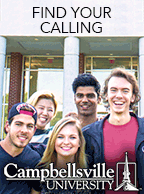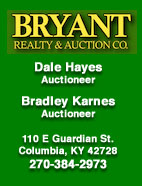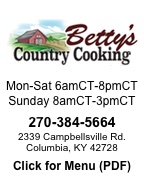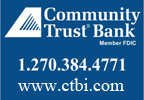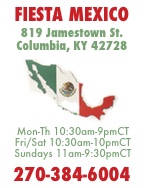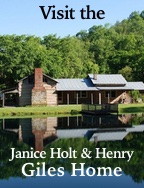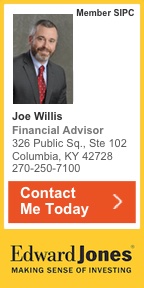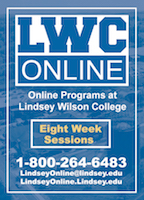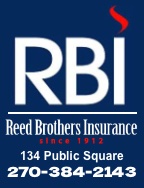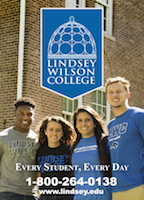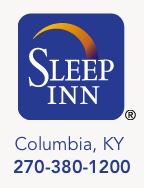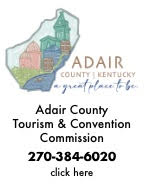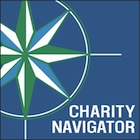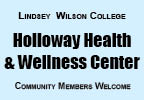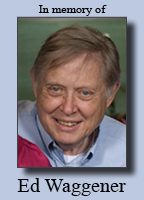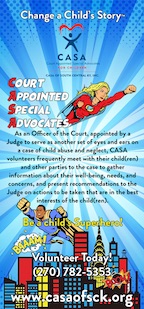| ||||||||||
Dr. Ronald P. Rogers CHIROPRACTOR Support for your body's natural healing capabilities 270-384-5554 Click here for details 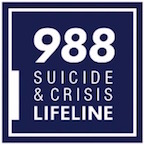


Columbia Gas Dept. GAS LEAK or GAS SMELL Contact Numbers 24 hrs/ 365 days 270-384-2006 or 9-1-1 Call before you dig Visit ColumbiaMagazine's Directory of Churches Addresses, times, phone numbers and more for churches in Adair County Find Great Stuff in ColumbiaMagazine's Classified Ads Antiques, Help Wanted, Autos, Real Estate, Legal Notices, More... 
|
Tom Chaney R724: Centre 6 - Harvard 0 Of Writers and Their Books. Essay By Tom Chaney Centre 6 - Harvard 0. First printed 20 August 2006 . The next earlier Tom Chaney Of Writers and Their Books column,Absolute Power By Tom Chaney Centre 6 - Harvard 0 Eighty-five years ago Horse Cave resident, Charlie Barthell Moran, "Uncle Charlie" rode the rails to Cambridge, Massachusetts, with his football team, the Praying Colonels of Centre College in Danville. That team trounced the nationally rated Harvard Crimsons 6--0 in what the Associated Press in 1950 called the "upset of the half century." The game was played before 50,000 fans -- most of whom rooted for the tiny Kentucky school who fielded about as many players as Harvard had coaches. Monday, August 28, 2006, ESPN Classic profiled that game on its Who's No.1? Biggest College Football Upsets. Uncle Charlie in Horse Cave From the time I was quite small my father often carried me with him to visit insurance customers and friends. Frequently the jaunt would include a stop on Church Street and a story-telling session with "Uncle Charlie" Moran with whom he shared a common birthday with George Washington. In those postwar days of the late 1940's professional baseball had climbed to a new pinnacle. Uncle Charlie had been a National League umpire retiring in 1939, I was told. That alone was enough to hold a ten-year-old in thrall. I still have the baseball he signed for me, although the ink is getting quite faint. He died of heart disease in Horse Cave June 14, 1949. Who in Hart County can help but know the name? Uncle Charlie's protg and friend Governor Albert Benjamin "Happy" Chandler named the new, arrow-straight strip of concrete from U. S. 31-W in Horse Cave to U. S. 31-E at the Wigwams (number one, that is) for his old mentor. The "Uncle Charlie Moran" highway (Kentucky 218) was built during the first Chandler administration in the late 1930's and passed by Moran's farm just short of 31-E. In the 1950's I began to hear about the Centre College "Praying Colonels" who had defeated Harvard College at football in 1921. The score was Centre 6; Harvard 0. That score is burned in my brain, for a much later and weaker Centre always played Georgetown College. A crew from Centre, hopeful that past glory was enough for 1950's victory, had emblazoned that score on the wall of the stadium at Georgetown. From Horse Cave Uncle Charlie had come to become a nationally recognized football and baseball coach, one of the all-time great major league baseball umpires, and to coach the Centre College football team to astounding triumphs. Centre was not the beginning Born in Nashville, Tennessee, February 22, 1878, Charlie Barthell Moran, attended the University of Tennessee playing football and baseball for one year. From there he went to the bush leagues of Texas where he played baseball in the Texas League for Dallas, Corsicana, Waco, and Cleburne. In 1903 and 1904 he served as manager for the Dallas Giants. He was a pitcher and catcher for the Saint Louis Cardinals. Charlie Moran married Pearl McGee making his home in Horse Cave. They had one son, Tom Moran. Head Coach for the Aggies From 1909 through 1914 Uncle Charlie coached football at Texas A&M. In six seasons there the Aggies recorded thirty-eight wins, eight losses and four ties -- A&M's best record to that time. When asked by a faculty member what he was teaching his players about being good losers, Moran replied, "I didn't come here to lose." In 1909 Uncle Charlie's Aggies humiliated archrival the University of Texas not once but twice. After 1911 UT refused to play A&M so long as Uncle Charlie was coach. A&M depended on the annual $10,000 to $15,000 the Texas game earned to support the athletic department. Moran left A&M in December 1914. The 875 members of the Corps of Cadets at A&M gave Uncle Charlie and his family a great send-off with a full dress parade. Uncle Charlie went on to coach at Bucknell University and Catawba College as well at Centre where he achieved the single most important victory of his career over Harvard in 1921. Ironically, Texas A&M dedicated a plaque to Moran at the 1949 Thanksgiving game with Texas. In 1968 he was named to the Texas A&M Athletic Hall of Fame -- five years after being inducted into the Kentucky Athletic Hall of Fame in 1963. Fort Worth beginnings John Y. Brown, Sr., provides the most comprehensive account of Uncle Charlie's six-year coaching blitz at Centre in his little book, Legend of the Praying Colonels, published in 1970. The story begins with the dream of Robert L. "Chief" Myers, who had been a student at Centre in 1907. He loved football and dreamed of playing. According to Brown he either "did not have the talent to play (or else he faced too much talent for him to make the team). But out of that interest in this game he had a dream that one day he would somehow be able to do, through others, what he could not do himself." That dream did not really take shape until in the second decade of the Twentieth Century when he got a job coaching football at Northside High School in Fort Worth Texas. One component of the fulfillment of any dream is to possess the component parts of that dream. If you want a football team, you gotta have players. One day Myers and his friend Sherman Minton, later United States Senator and Justice of the Supreme Court, were about to enter a baseball game in Fort Worth. They heard a disturbance behind them. Turning, they saw two policemen collaring a 13-year-old boy. They inquired as to the problem, and were told that the boy had tried to sneak in without paying. Myers took the boy and paid his way into the game. The youth was Alvin Nugent "Bo" McMillan, a member of a juvenile gang from the wrong side of the Fort Worth tracks. Chief herded Bo and several friends along through -- or almost through -- high school. Centre College, Danville "In 1916, Chief induced Bob Mathias, Matty Bell, . . . . Thad McDonald, Bo McMillan, and Red Weaver to make the long trip to Danville, Ky., for the purpose of entering Centre College." Matty and Bob were eligible for entry. Bo, Thad and Red could not meet Centre's stringent entrance requirements without additional high school credits. Chief arranged for them to enter Somerset High School. Brown notes Somerset developed in 1916 the most fantastic high school football team ever seen in the state of Kentucky. Three future All Americans playing at the same time -- McMillan, Weaver, and Roberts. Louisville Boys High had scheduled Somerset as a rest between two tough teams -- Somerset creamed them 56 to 6. By 1917 the embryo of the Praying Colonels had arrived in Danville. Red Roberts had another year of high school at Somerset and joined his teammates in 1918. Enter -- Uncle Charlie By the fall of 1917 Moran had left coaching and become a National League umpire. Just after he finished umpiring the 1917 World Series he stopped by Centre to visit his son Tom then a student at Centre. According to Brown the story goes like this. "In the afternoon, Tommy said to his father, 'Dad, I'm going out for football. Would you like to come out and watch us practice?' . . . . On that day, because his boy wanted him to go out and watch, Unc went out on the football field." On that field Uncle Charlie saw a squad which looked like a bunch of professionals. "Moran went over to Chief Myers and introduced himself saying, 'You know, I don't have anything to do this fall and my boy is up here in school. I'd be glad to stay up here and help you coach if you have no objection.'" Of course, there were no objections. Myers knew of Moran's reputation and replied that he would not only like his help but would turn over the coaching duties to him. Uncle Charlie knew what he had seen that day, and had the temerity to ask. As a result he had the opportunity for at least one National Championship and a series of Southern Championships from 1918 through 1923 when he left Centre to coach at Bucknell. When Uncle Charlie left Centre in 1923 he had built a record of 53 wins, 8 losses, and 1 tie. This was a remarkable record made in the era of the famous Four Horsemen of Notre Dame and the Granite Wall of Fordham. But the forty-year-old Charlie Barthell Moran of Horse Cave was up to the challenge. After all he had been the coach of Jim Thorpe and Joe Guyon of the Carlisle Indians. He was equal to the task of the Praying Colonels. That nickname came about before the 1917 game with Kentucky. The Wildcats had trounced Centre 66--0 the year before. The Chief had a legendary prep talk he gave before the game. Brown, who was present as a scrub, recalls, "[H]e suggested there was a power higher than that of mere humans and he thought it might be well if we bowed our heads and asked guidance from that superior power, to guide our conduct through that game. I recall that it was Hunk Mathias who, in a burst of enthusiasm, said, 'Let me lead that damned prayer.' That is how we became known as The Praying Colonels of Centre College." Centre 6 -- Harvard 0 Brown does a fine job of recounting the season-by-season, game-by-game history of the golden era of the Praying Colonels. But the second game with national power Harvard in 1921 was the climax of Uncle Charlie and the Praying Colonels' six-year run. Centre had traveled to Cambridge in 1920 receiving a gracious and enthusiastic welcome but had lost to the Crimson 14 to 31. That loss was primarily due to a weak defense and lack of depth. In the spring of 1921 Moran engaged a pro player Tiny Thornhill of the Pittsburgh Steelers to teach defense during Centre's first ever spring practice. In October, fresh from a 98 to 0 defeat of Transylvania, the Praying Colonels set out by train to avenge their previous year's loss. Before a sellout crowd of 50,000 the defense worked. Harvard fought fiercely but could not cross the goal line altho ugh they threatened to score the entire game. Uncle Charlie's defense held firm. It fell to Captain Bo McMillan to score the only touchdown of the day. Bo got away at the Harvard 37 yard line and made a run to the goal. After the Harvard victory Centre finished the season holding Kentucky, Auburn, Washington & Lee, Tulane, and Arizona scoreless while themselves scoring 150 points -- winning a National Championship. Back behind the Plate Bo was gone. Life on the Centre gridiron returned to a more normal pace. Harvard won the third match in 1922. After the 1923 season, Moran left to coach at Bucknell. And he stood behind the plate of the National League until his retirement in 1939 -- officiating in four World Series. The stories about his umpiring are legion. A fancier and breeder of hunting dogs, Uncle Charlie was dickering with a catcher over the sale of a dog to the catcher. The trading went on all during the stand of one batter in the box. When the catcher made an inadequate bid Uncle Charlie cried, "Ball one!" When the catcher praised the dog and raised the bid, "Strike One!" Thus it went to a full count -- 3 to 2. Finally the catcher gave up and agreed to buy the dog. "Strike Three! You're out!" quoth Uncle Charlie. The batter flung down his bat in disgust muttering that the calls had no bearing on the pitches -- rather they depended on the negotiations for that "damn dog." Some years after Uncle Charlie's death, I was sitting in a class in theology at the seminary in Louisville. The professor was illustrating a point about the nature of perception and its relationship to truth. To make his point, he told about Uncle Charlie making a difficult call at the plate. It was close. Was the pitch a ball? Was it a strike? Uncle Charlie stood mute. The catcher jumped up to protest that the pitch was a strike. The batter cried, "Ball!" The managers rushed out to join the fray. Still Uncle Charlie said not a word. When the argument died away, Uncle Charlie looked them all in the eye one by one and said, "It may be a ball. It may be a strike. But it ain't nothing 'till I call it." That, said the professor, is the nature of truth. Tom Chaney can be found telling stories, planning his next meal, and occasionally selling books at THE BOOKSTORE Box 73 / 111 Water Street Horse Cave, Kentucky 42749. Phone (270) 786-3084. email: Tom Chaney bookstore@scrtc.com The BOOKSTORE NOTE from ROBERT STONE: This text has revisions which did not make it into the print edition. Although many sources have it otherwise, the name is Charlie Barthell Moran -- not Charles. For further information on the big game, you can check this Centre College webpage:C6-H0 : The Centre Harvard Game of 1921 -by- Valarie H. Ziegler (Centre College Class of 1976) The Centre Harvard Game of 1921 This story was posted on 2011-08-21 17:53:32
Printable: this page is now automatically formatted for printing.
Have comments or corrections for this story? Use our contact form and let us know. More articles from topic Tom Chaney: Of Writers and Their Books:
Tom Chaney: R723: A review of Absolute Power Tom Chaney R722: The evil of ignorance Tom Chaney No. R721: Confusing the surface with layer underneath Tom Chaney No. R720. a review of Hannah Coulter Tom Chaney No. R719. Review of A Heckuva Job Tom Chaney No. R718: Robert Worth Bingham Tom Chaney: R717: Wm. Ellis, The Kentucky River, a review Tom Chaney: No. R716: A Grisham Addiction Tom Chaney: No. R715- Summertime reading Tom Chaney R714: The Bookman as Detective View even more articles in topic Tom Chaney: Of Writers and Their Books |
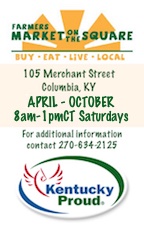
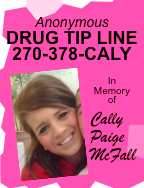

|
||||||||
|
| ||||||||||
|
Quick Links to Popular Features
Looking for a story or picture? Try our Photo Archive or our Stories Archive for all the information that's appeared on ColumbiaMagazine.com. | ||||||||||
|
Contact us: Columbia Magazine and columbiamagazine.com are published by Linda Waggener and Pen Waggener, PO Box 906, Columbia, KY 42728. Please use our contact page, or send questions about technical issues with this site to webmaster@columbiamagazine.com. All logos and trademarks used on this site are property of their respective owners. All comments remain the property and responsibility of their posters, all articles and photos remain the property of their creators, and all the rest is copyright 1995-Present by Columbia Magazine. Privacy policy: use of this site requires no sharing of information. Voluntarily shared information may be published and made available to the public on this site and/or stored electronically. Anonymous submissions will be subject to additional verification. Cookies are not required to use our site. However, if you have cookies enabled in your web browser, some of our advertisers may use cookies for interest-based advertising across multiple domains. For more information about third-party advertising, visit the NAI web privacy site.
| ||||||||||


